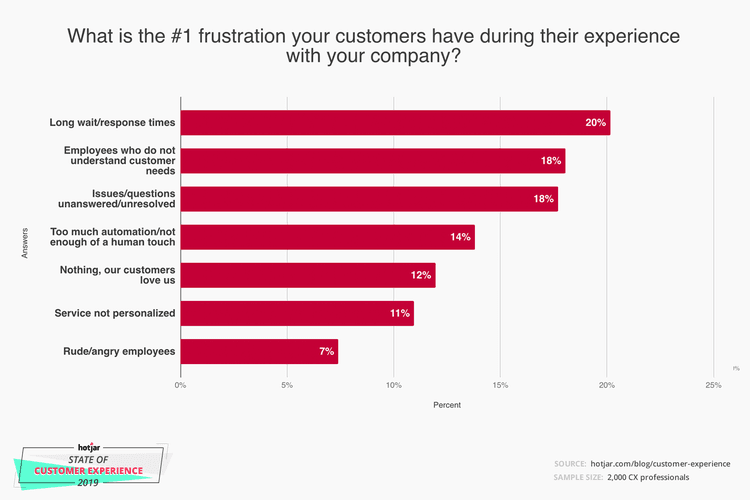By Grace Lau
Customers are more discerning than ever, so providing excellent customer service is crucial.
Today, a high-quality customer experience often attracts new customers and keeps them steadfast followers of your brand.
In fact, 89% of businesses that prioritize customer service enjoy better financial performance than their rivals.
Given the increasingly multi-channel nature of business, customers are used to engaging with brands across a diverse array of touchpoints. Naturally, then, effective virtual collaboration between all your different teams has come to define what it means to deliver excellent customer service.
In this post, we’ll lay out why strong virtual and cross-team collaboration is integral to customer service.
The importance of providing great customer service
Customer service is a key differentiator for brands, and today’s customers reach out across many virtual channels involving different departments.
Increasingly, strong virtual collaboration is the key to ensuring consistency through all of these interactions.
When colleagues are unable to collaborate in real-time, it can end up impacting customer satisfaction. Customers reach out and experience inefficient, drawn-out customer service and, worse, crossed wires.
Excellent customer service means providing quality support at every stage in the customer journey. This encompasses their first encounter with your brand on social media and the helpful reminders you send via A2P messaging, all the way through to their retention as loyal customers through their contact with you via email and various other channels.
We’ll now explore why virtual collaboration has such an impact on customer service.
1. Helps prevent a silo mentality
A silo mentality occurs when teams grow isolated or worse competitive, and this impacts how they communicate with each other and customers across different communication channels.

Silos can be especially problematic among virtual teams and undermine effective collaboration.
Perhaps different teams are failing to share accurate information consistently. It could show up, for example, when your product team continues making the same products about which customers have already expressed negative feedback.
Without effective virtual collaboration, it’s difficult for teams to unify customer data across a growing number of touchpoints and the customer experience becomes disjointed.
Strong virtual collaboration means cross-team cooperation, aided by digital tools and resources.
When everyone is on the same page about goals and tasks, they can communicate consistently and effectively and, thereby, meet the challenge of providing excellent customer service.
2. Facilitates a seamless customer journey
From when a company first captures the customer’s attention, through its marketing, to the ongoing customer onboarding process, and beyond, all touchpoints in the customer journey are created equal. You must use a range of customer service techniques at each.
Customers demand a unified brand experience. And this requires virtual, company-wide collaboration—aided by a range of virtual collaboration tools—that ushers customers along an optimized customer journey.
First, your content team must produce content that accurately reflects information about the products, aligns with the brand voice developed by the marketing team, and educates customers about products and services according to feedback collected by the customer success team.
Consider when a client reaches out with an initial query on one platform at an early stage in their journey (social media) and seeks further help, later in on their journey, on another (by phone).
The right technology allows businesses an overview of all client interactions across channels.
A CRM, for example, gives agents instant access to relevant, up-to-date notes and data about a specific client issue. When teams can see the context of every customer interaction, customers can pick up where they left off without having to repeat their queries.
3. Helps you address customer pain points
When it comes to solving tricky customer pain points, colleagues can use digital tools to gather and convey information to provide the best solutions as quickly and efficiently as possible.
With strong virtual collaboration, issues that get fed back at any point in the customer journey are easily directed to the right team and addressed straight away.
Teams that communicate better can also empower each other with valuable context and insights that help customers to get the right answer from the right employee at the right time.
For example, customer success teams already constantly engage with customers, collecting valuable insights about problems, concerns, and satisfaction levels.

Thus, whether it’s conducting surveys or interviews to solicit feedback directly or passing on data collected from support requests, they’re well placed to collaborate with engineering teams in addressing pain points that keep customers happy and increase retention rates.
Powerful virtual collaboration also enables companies to build better relationships with customers. For example, they can call customers for interviews and ensure their evaluations get passed on to the product team engaged in, for example, app testing.
In doing so, they help product teams create user-friendly products and deliver customized and personalized customer service.
4. Promotes knowledge sharing
Conveying a thorough and accurate knowledge of your products or services is part of your sales team’s role, but in order to equip them with all the information they need, other teams must share their expertise.
For starters, product teams have a comprehensive knowledge of the products they’ve conceived and developed.
Sales teams can only offer customers answers and write the most effective, tailored sales pitches when armed with a deep and accurate knowledge of the products they’re selling.
They can then make persuasive pitches and provide answers to customer questions based on product functions and features and demonstrate use-cases that highlight benefits in convincing ways.
When sales teams collaborate virtually with other teams, they can more easily understand insights and invaluable feedback about customer sentiment, preferences, behaviors, and reactions concerning the product.
Virtual collaboration enables faster and more flexible knowledge sharing and that ultimately supports great customer service. Screen sharing and video chat tools are a revelation here.

5. Fosters a collaborative culture and staff engagement
When teams collaborate virtually, it fosters a strong culture of mutual support and a sense of community that transmits to customer service interactions.
Having direct access to other team members allows colleagues to brainstorm ideas and troubleshoot issues disturbing customers.
An under-emphasized benefit of strong virtual communication is in keeping colleagues’ spirits up and promoting a healthy team culture.
Teams can host virtual get-togethers to blow off steam, build trust, and bond with icebreaker games.
Happy employees that feel well-supported will be more able to perform with the speed and poise required to deliver excellent customer service.
6. Increases productivity
Thanks to new technology and tools, teams can collaborate virtually to increase productivity and add convenience for staff while improving customer experience in lasting ways.
Virtual collaboration tools empower your customer service team to achieve critical efficiencies in workflows. With instant messaging software, scattered employees in different time zones can get instant responses to queries.
Workforce management solutions can help you identify gaps in your customer service offering so that you can boost productivity further.
Or let’s consider the ecosystem of affiliate marketing. Partner relationship management solutions (partner relationship management definition: Software and systems that manage interactions with the partner base in affiliate marketing) let channel partners relay real-time feedback on products during new product launches.
In addition, these tools support ongoing technical training to indirect teams in solving product problems for customers so that every customer interaction is productive.

7. Eliminates communication lag
The importance of effective communication in business can hardly be overstated.
And when teams deliver customer experience remotely, there’s always a danger that communications or important updates might fall through the cracks.
Known as the communication lag, this can impair your teams’ ability to provide a first-rate customer experience.
If your remote teams experience recurring problems connecting reliably, it can eventually erode morale and lead to workflow inefficiencies.
Fortunately, companies can deploy best practices and the right tools and systems to collaborate virtually. That way, they can work together to keep everyone accountable and maintain team rapport while still scaling up revenues in a cost-effective manner.
As a general rule, the best tools allow teams to share information in real-time, automate workflows, and take advantage of a collaborative workspace, even while remote-working. They also allow distributed teams to collaborate in real-time and handle customer questions efficiently.
And the right tools can also help businesses scale their customer support without additional hiring.
8. Helps you create valuable materials for customers
The insights gathered from the collaborative efforts of your customer success and marketing teams can be used to create a range of online content materials that improve the customer experience.
One key source of information comes from virtual tools that track support tickets, from which you can generate content that speaks to the most common issues and queries that customers tend to face.
Companies can create helpful customer-driven content that lessens the workload of your customer success team and reduces frustrating customer wait times to boot.
Customers appreciate the instant support and self-service aspect of content such as FAQ pages, blog posts, case studies, and onboarding tutorials.

Get collaborating!
Strong virtual communication and collaboration is crucial to delivering great customer service.
Thankfully, new technologies and tools are available that support customer service teams to collaborate better internally and empower them to communicate with customers more effectively.
Use them to deliver the fast, frictionless omnichannel experience customers now expect.
About the Author
 Grace Lau is the Director of Growth Content at Dialpad, an AI-powered cloud communication platform with powerful cloud PBX features and free video call for better and easier team collaboration. She has over 10 years of experience in content writing and strategy. Currently, she is responsible for leading branded and editorial content strategies, partnering with SEO and Ops teams to build and nurture content. Here is her LinkedIn.
Grace Lau is the Director of Growth Content at Dialpad, an AI-powered cloud communication platform with powerful cloud PBX features and free video call for better and easier team collaboration. She has over 10 years of experience in content writing and strategy. Currently, she is responsible for leading branded and editorial content strategies, partnering with SEO and Ops teams to build and nurture content. Here is her LinkedIn.



































